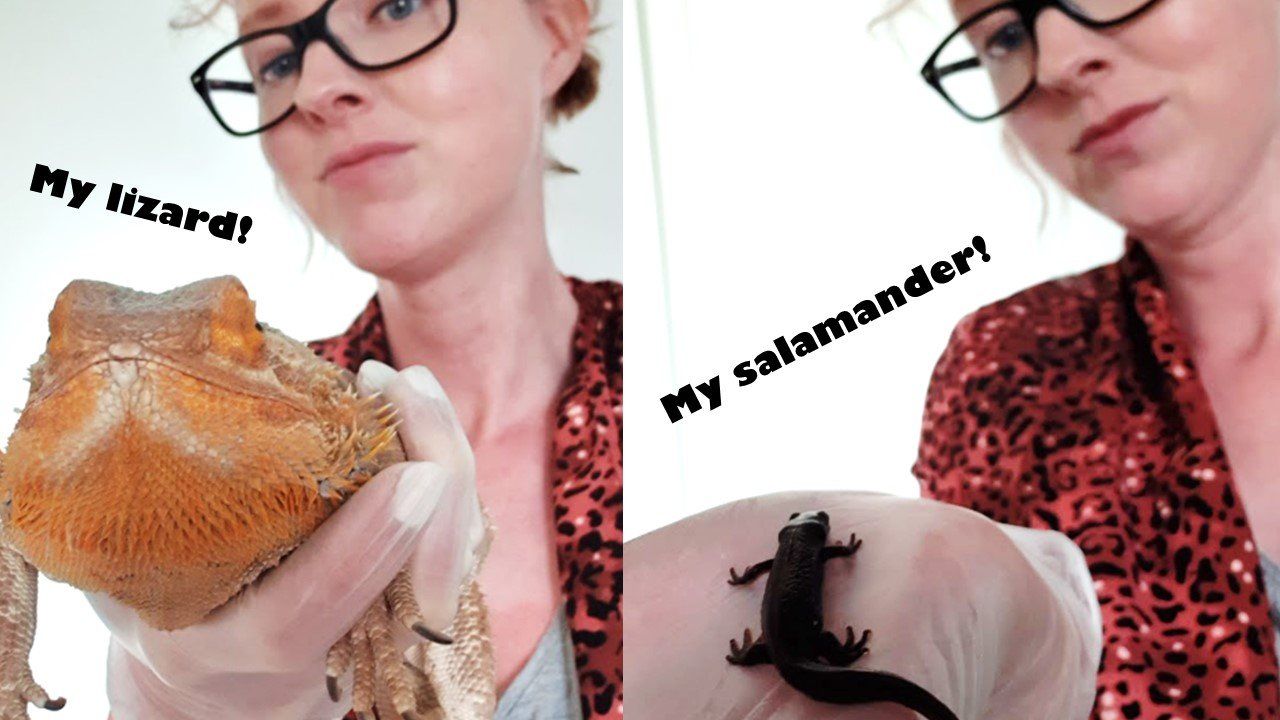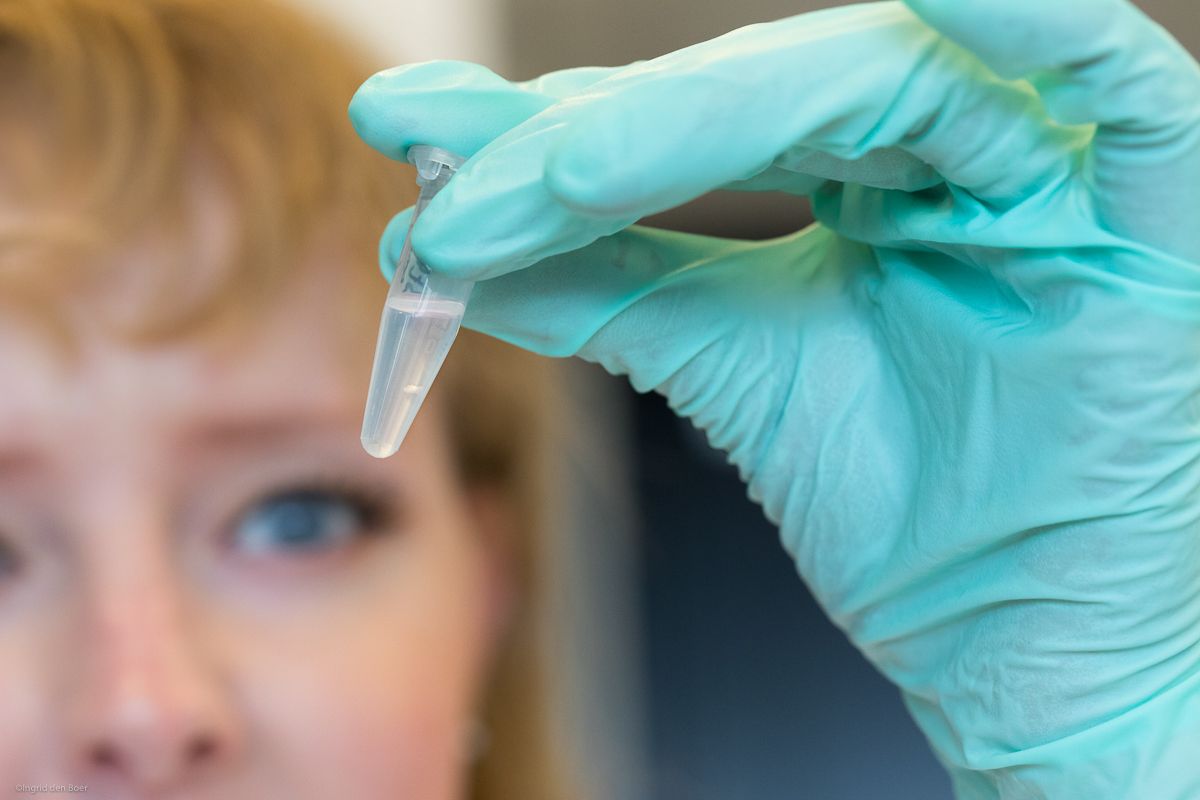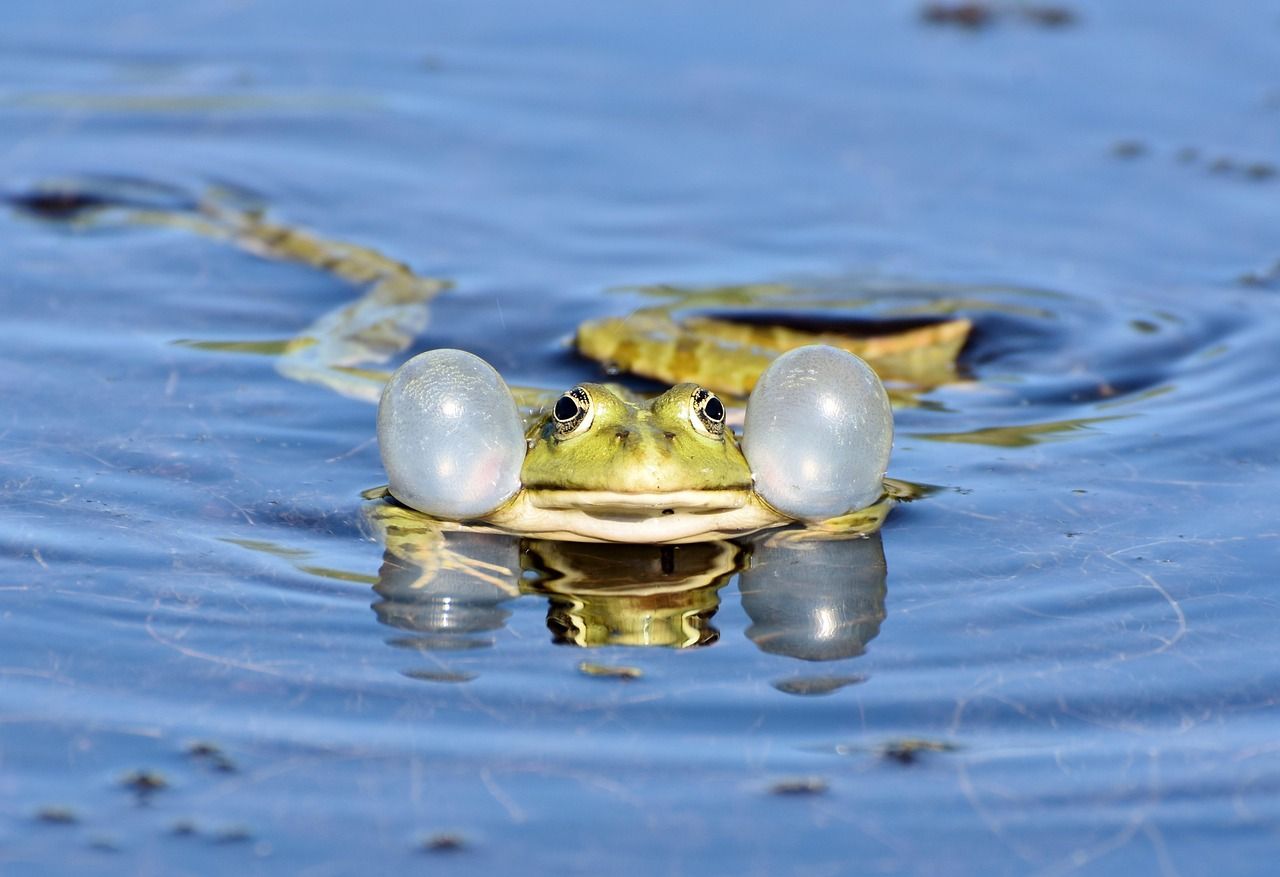Salamanders and Lizards: 14 ways to tell them apart!
(Blog alleen in het Engels)
23 sept, 2021
Can you distinguish a lizard from a salamander? They are mistaken for one another more often than not, as they resemble each other quite a lot. But, a closer look will tell you that they are very different animals. These 14 characteristics will help you tell them apart!
Look-a-like crawlers
I have been researching salamanders for two years now. I own both a lizard and a small colony of salamanders as pets. Often, people come up to me saying “how cool that you are researching salamanders!” – a statement that I obviously agree with. But it has happened on occasion that once we continue talking, they start searching through their phone, and they say: “I once held this salamander in my hands. That’s a nice one right?” Then they show me a picture of a bearded dragon, or an iguana. Definitely awesome! But those are not salamanders.
It is not surprising that many people mix up salamanders and lizards. The two appear very similar at first glance. Especially the body shapes look alike: salamanders and lizards are mostly slender, with two forelimbs and two hindlimbs – and they generally have a long tail. They are also both known to be cold-blooded animals and they crawl in a similar way when they move. But in reality, many major differences go hidden behind these similarities. After reading this list of 14 differences between salamanders and lizards, you will hopefully understand why they are not at all one and the same thing. You will have the tools to differentiate between them for once and for all!
1) Evolution
Salamanders are amphibians, just like frogs and toads, whereas lizards are reptiles, just like snakes and crocodiles (and ‘surprise surprise’: also
birds!) Amphibians originated over 360 million years ago, well before the first reptilian-like animal, which evolved around 300 million years ago. This means amphibians and reptiles have a very distinct evolutionary history and thus have a very different story to tell. It also means that, in the context of relatedness, lizards are actually more closely related to us humans than they are related to the salamanders – crazy, huh?
2) DNA
I study DNA – so it makes sense to bring that up even though you cannot see DNA with your bare eyes. Still, because salamanders and lizards evolved differently, their DNA turned out also very different over the course of time. The entire genetic code of a salamander is even ten times the size of that of a lizard, or of a human for that matter!
3) App—ear—ance
An anatomical difference is the ear opening: it is clearly visible in lizards, but not in salamanders. Because lizards and salamanders have completely different life cycles and lifestyles, they also evolved different hearing strategies. Unlike lizards, salamanders do not possess external ears. They do have inner ears, though, which means they are not deaf! But they are likely better at perceiving ‘sounds’ more indirectly, namely by feeling the vibrations caused by sound waves. This as opposed to lizards, which can also feel vibrations, but generally have much better hearing as well.
4) Count the toes
Another anatomical difference you can use to determine whether you are dealing with a salamander or a lizard, is by looking at the number of toes. It is almost always the case that a salamander has only four toes on their front legs, and five toes on their rear legs, whereas lizards have five toes on both their front and rear legs. Keep in mind, though, that there are exceptions, as some limbless lizard and salamander species do exist.
5) Check for claws
Connected to the feet thing: while you are counting toes in the figure below, also keep an eye on the presence of claws. Only lizards have claws – and are thus able to scratch you when you hold them, for instance. Salamanders are more “primitive” in that way: their paws are harmless and their stubby toes and fingers often look more like sausages (in my eyes, at least!).
6) Do a skin scan
One way you can distinguish salamanders from lizards is by looking at their skin. The skin of lizards consists of scales, whereas the skin of salamanders is more smooth. Some salamanders do have a more of a ‘warty’ skin, but there are never scales. That being said: both salamanders and lizards do shed their skin regularly. I suppose skin care simply matters to all creatures.
7) Sunbath, or sunburn?
Because of the difference in the skin types, you will find salamanders and lizards mostly in a different type of environment. Mind the sunshine: is the animal enjoying a sunny place, or was it hiding in a shady, cool place - under a tree log for instance? Lizards love basking in the sun, they need it to warm up and they are very well adapted to handling the heat and drought. This is not the case for salamanders: too much sun and they will dry out!
8) The way they breathe
The difference in the skin types has everything to do with breathing. A salamander’s skin is porous and permeable so that they can absorb oxygen through it. That’s mostly for when they are in the water: many species live aquatically for a part of their life or even their entire life! Most adult salamanders do have lungs by the way, but also then they can still use their specially designed skin for breathing too. Lizards have only their lungs to rely on, as their skin is designed to do just the opposite: keep water from going in or out.
9) Speed on land vs. in water
Put a salamander and lizard right next to each other on land and observe. The chances are high that the lizard outruns the salamander (in the case they don’t attack or eat each other). This is because lizards have relatively long limbs and use them in more of a quick ‘creeping’ motion. Salamanders, on the other hand, generally move a bit slower – except for when they are in the water. Some species do not even live on land at all. Aquatic salamanders can swim extremely fast if they need to and they may very well outswim any lizard!
First: salamander walking on land (Pixabay) - Second: lizard walking on land (Pexels)
10) Reproduction
The reproduction strategy can tell a lot about whether you are dealing with a lizard or a salamander. In lizards the male often needs to come into direct contact with the female in order to get her pregnant. Mating happens mostly on land. For many salamander species, on the other hand, the mating is not physical and reproduction happens mostly under water. In many cases a male salamander will deposit a ‘spermatophore’, which is basically a package of sperm that the female can then take up into her own body. Such a special delivery!
11) Eggs
Most lizards and salamanders reproduce by laying eggs (with a few exceptions). The eggs of lizards generally have a ‘leathery’ shell and the females mostly lay the eggs on or in the ground, within a protective site such as a nest, fissure, or hole. For many salamander species, however, the eggshell is more ‘gelatinous’ and instead of being laid on land, they are often deposited under water. This means that all salamanders are eventually also born under water!
12) Metamorphosis
Remember that salamanders are born under water, while lizards are born on land? Salamander hatchling are typically called “larvae” (which can be compared to the tadpoles of frogs and toads). These larvae are born with gills, which allow them to breathe under water. Most species later undergo a special change called “metamorphosis”: they will develop lungs so they can also live on land. Lizards never go through metamorphosis, as they are already born with fully developed lungs.
13) Poop = evidence!
If you want to stop mixing lizards and salamanders up, you can always take a close look at their poop: lizard droppings are easily identified because, just as in birds, they excrete mostly a black turd that is accompanied by a white or yellowish tip. The “urine” of the lizard – the white part - is concentrated in the bladder to retain as much water as possible. The black part is the actual solid food waste. The dung of salamanders looks different, as it is less concentrated. In the water, salamander droppings mostly resemble the feces of fish: simple, grey strings with not much else going on.
14) Superpower: regeneration
An extra fun-fact about the differences between lizards and salamanders has everything to do with how they regenerate lost or injured body parts. Lizards sometimes rid their tail, for instance to avoid being eaten by a predator. It regrows, mostly, but they will get a less fancy looking, smaller tail end in return. However, salamanders are the true regeneration experts: they can regrow all sorts of tissue, organs and whole limbs and body parts if they need to!
Conclusion
In conclusion, salamanders and lizards are completely different animals. Lizards are reptiles who mostly live on land, love to sunbathe, and have evolved a special skin and internal mechanisms to stay hydrated without always needing water directly. Salamanders, on the other hand, are amphibians who are always nearby or in the water, as they are much more susceptible to dehydration because of their porous and vulnerable skin.
Both lizards and salamanders need our help. In the wild, they both rely heavily on their ecosystems. They are adapted to their own type of natural living environment, but many species are endangered due to pollution, global warming and habitat destruction, which leaves them with less and less areas to be safe in. Also, if you want to keep them as pets that is fine! But always try to make sure you obtain them from a respected breeder - that way you will likely not support the wildlife trade.
If you want to help protect these beautiful animals, perhaps you can consider supporting one of the causes listed below. You could donate money, but you could maybe also find an organization which you can help monitor reptiles and amphibians, perhaps even nearby your own home. If you decide to do this, at least you know you are fully equipped to tell apart the salamanders from the lizards!
Photos & videos: a mix of several photo's from Pixabay, Pexels, and my own material. Please check with me before re-using.











